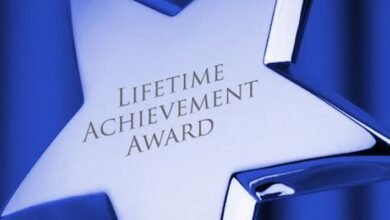“Honored With Lifetime: The Quiet Power of a Lifetime Distinction”

Introduction
Being told you are “Honored With Lifetime” is a phrase that carries both immediate warmth and long-term consequence. It can mean a lifetime achievement award, a permanent title, or an enduring form of recognition from an institution, community, or profession. Such an honor signals that your contributions have gone beyond the ordinary and are considered lasting, often shaping how others remember both your work and your character. At the same time, lifetime honors come with unique responsibilities: they shape expectations, influence legacy, and sometimes alter how you are perceived both publicly and personally. In this article we’ll explore the full meaning of this kind of recognition, how it affects identity and reputation, the responsibilities that often follow, and practical ways to celebrate and safeguard that honor for future generations.
The meaning of being “Honored With Lifetime”
To be honored with a lifetime distinction is to receive recognition that transcends a single achievement and affirms sustained impact. Unlike awards tied to one accomplishment or a particular year, lifetime honors typically reflect consistent excellence, enduring influence, or groundbreaking contributions that have reshaped a field, community, or institution. They send a message both symbolic and concrete: that the person’s work has become part of the cultural or professional fabric. This kind of honor also reframes memories and narratives biographies, institutional histories, and public acknowledgments will often treat the honoree’s contributions as reference points for others. For many recipients, the phrase “lifetime” is less about permanence and more about continuity: it grants permission for future generations to learn from, build on, and be inspired by the honoree’s achievements. The recognition can be deeply validating, yet it also encourages reflection on how one’s work will be stewarded and referenced after their active years end.
Impact on personal identity and legacy
Receiving a lifetime honor shifts how a person sees themselves and how they are remembered. Internally, it can validate years of dedication and offer a sense of completion or fulfillment an external acknowledgment matching internal striving. For some, it becomes a capstone that reframes earlier failures or struggles as necessary steps in a meaningful journey. Socially, lifetime recognition often changes the dynamic with colleagues, mentees, and the public: the honoree may become a touchstone or a mentor by default, expected to embody the values associated with their recognition. Legacy-wise, a lifetime honor can influence archival priorities, biographies, and educational narratives. People and institutions will reference the honoree’s work when teaching, policymaking, or celebrating standards. It’s important to remember that legacy isn’t just what was accomplished but how it’s conveyed stories, citations, and stewardship determine whether the honor continues to inspire or slowly fades. Thoughtful stewardship documenting methods, mentoring successors, and clarifying the intent behind one’s work helps ensure the honor produces lasting, positive influence.
Responsibilities and expectations that follow
A lifetime honor often brings implicit responsibilities. Even if the recognition is retrospective, the title can create expectations: to act as an ethical exemplar, to advise future leaders, or to endorse standards within the field. Institutions may invite honorees to participate in ceremonies, advisory boards, or public speaking roles that carry visibility and influence. That visibility can be a double-edged sword: it offers opportunities to shape the next generation but also exposes the honoree to scrutiny. Being “honored with lifetime” also requires careful boundary-setting honorees must decide how actively to engage in public life, how to manage requests for endorsements or participation, and how to protect the integrity of the recognition from misuse. Transparent communication about values, selective engagements that align with the honoree’s mission, and passing knowledge through formal mentorship or recorded teachings are practical ways to honor the recognition responsibly. Ultimately, stewardship of the honor matters as much as the award itself; the way an honoree behaves after receiving the distinction will shape how that honor ages.
Celebrating and preserving the honor
Celebration and preservation are two sides of the same coin. Celebration lifts morale, recognizes supporters and collaborators, and publicly affirms the honoree’s contributions. Practical celebration ideas include curated exhibitions, oral-history projects, published retrospectives, or community events that spotlight both work and context. Preservation, meanwhile, is about creating durable record archives, written reflections, annotated bibliographies, recorded interviews, and curated digital assets that future learners can access. Institutions and families should collaborate to ensure materials are accessible, accurate, and contextualized so that the honor remains meaningful rather than becoming an empty label. Thoughtful commemoration also includes succession planning: identifying and supporting protégés, establishing scholarships or awards in the honoree’s name, or creating fellowships that continue the honoree’s mission. When celebration is combined with careful preservation, a lifetime honor evolves from a moment into an enduring resource that educates and inspires.
Conclusion
Being “Honored With Lifetime” is more than a label it’s a recognition that extends influence across time. It rewards dedication, reshapes identity, and opens new avenues for both responsibility and legacy-building. The true value of such an honor depends on how it’s stewarded: through intentional celebration, thoughtful preservation, and a commitment to mentoring the next generation. When approached with humility and care, a lifetime distinction becomes a bridge between past contributions and future possibilities, ensuring the honoree’s work continues to matter long after the applause fades.
Frequently Asked Questions (FAQs)
Q: Does “lifetime” mean the honor can’t ever be revoked?
A: Not necessarily. Some institutions have clauses allowing revocation for serious misconduct; policies vary. “Lifetime” usually indicates lasting recognition but not absolute immunity.
Q: Should honorees change their public behavior after receiving a lifetime honor?
A: Many feel pressure to model high standards, but it’s ultimately personal. Honorees should align public behavior with the values associated with the award and set healthy boundaries.
Q: How can families help preserve a lifetime honor?
A: Families can organize archives, collaborate with institutions for proper record-keeping, and support public-facing projects like memoirs or digital collections.
Q: Can a lifetime honor boost career opportunities?
A: Yes—honors often open doors for speaking, advisory roles, and collaborations, but the effect depends on the field and how the honoree leverages the recognition.
Q: What’s a practical first step after receiving a lifetime honor?
A: Document the moment record reflections, gather important correspondence, and discuss with your institution how the recognition will be used and preserved.



